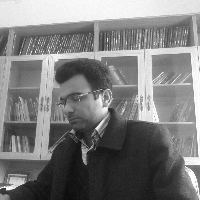Explaining the Framework for Regenerating Urban Post-Industrial Landscapes Based on a Regenerative Design and Development Approach
Author(s):
Article Type:
Research/Original Article (دارای رتبه معتبر)
Abstract:
Post-industrial landscapes with identity values are recognized as cultural heritage of the modern era. These areas have been damaged socially, economically, and environmentally, and have created an unsuitable visual landscape. Various interventions have been made in these areas, but due to the complexity of these landscapes and the damage to the ecosystem, a comprehensive approach is needed. This approach should preserve the industrial heritage values, repair past damages, and improve the mutual interaction between humans and nature. The “regenerative design and development” approach, employing a “comprehensive” and “systematic” view, uses the system’s intrinsic resources to create restoration and regeneration that leads to the integration of human society’s needs and nature. The research aims to provide a comprehensive framework for regenerating post-industrial landscapes with a regenerative approach. In this study, the influential factors in regenerating post-industrial landscapes in previous methods were analyzed and compared with the effective trends in the regenerative approach and were enhanced. Then, using the Perkins + Will framework, as one of the practical regenerative frameworks, a comprehensive and innovative framework for regenerating post-industrial landscapes was presented. This framework is a multi-layered diagram consisting of a core and several rings, based on which policies and strategies for the design and development of post-industrial landscapes are provided. In this framework, “place” is the core of the system, the first ring is “place assessment dimensions,” the second ring is “effective trends” in regenerating post-industrial landscapes, the third ring is “sub-trends,” and the fourth ring is the “ecosystem.” According to the research findings, the effective trends in regenerating post-industrial landscapes include 12 trends: biodiversity, community, economy, culture, education, aesthetics, health, participation, infrastructure, materials, energy, and water. This framework can be applied to regenerate post-industrial sites ranging from a small workshop to a large industrial complex.
Keywords:
Language:
Persian
Published:
MANZAR, Volume:17 Issue: 70, 2025
Pages:
16 to 25
https://www.magiran.com/p2835008
سامانه نویسندگان
مقالات دیگری از این نویسنده (گان)
-
Advancing Neuro-Urbanism: Integrating Environmental Sensing and Human-Centered Design for Healthier Cities
Farshad Askari, *, Kaveh Fattahi
Journal of Contributions of Science and Technology for Engineering, Winter 2025 -
Determining Key Approaches to Historic Urban Landscape Restoration; Case Study: Urban Fabric Surrounding Dokouhak Caravanserai in Shiraz
Fatemeh Zarei Kordshouli, *
International Journal of Iranian Urban Design Studies,



